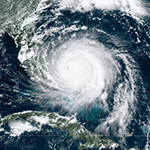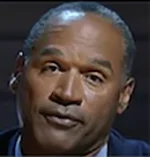 |
Weber Shandwick has one of the toughest jobs in PR, which is restoring the tourism business in The Bahamas following the devastation of Hurricane Dorian.
The official death toll of 50 will rise sharply as thousands of people remain missing and bodies are recovered from the rubble. Stories of misery abound.
The Government of Bahamas wants to get the word out that Dorian affected only the country's two most northern islands, Grand Bahama and The Abacos, leaving the rest of the nation completely unscathed.
The archipelago consists of 700 islands spread out over 100,000 sq. miles of ocean in an area that from north and south is equal to the length of California.
The country's 14 key tourist spots including Nassau and Paradise Island, Bimini, Rum Cay and The Exumas are open for business and waiting for American visitors. North America accounts for 80 percent of the visitors to The Bahamas.
The Bahamas Ministry of Tourism & Aviation wants Americans to know that the best thing they can do to help the country's economy is to visit and spend money. Tourism supports about half of the jobs in The Bahamas.
"Maintaining a robust tourism industry will be vital in helping the country to recover and rebuild," said Dionisio D'Aguilar, tourism chief, in a Sept. 9 release distributed by Weber Shandwick.
While the Bahamian government makes valid points about Dorian's limited fury, a tourism pitch during a time of grieving is a very tough sell.
It's hard to overcome the emotional impact triggered by heart-breaking television and Internet images of total destruction and suffering people who have lost all of their earthly possessions. The pictures don't exactly entice viewers to make vacation plans.
The post-Dorian images aren't going to disappear any time soon. It will take years to rebuild Grand Bahama and the Abacos. The media and citizen journalists will be there to chart progress and take plenty of pictures.
 |
Sign of our troubled times: as the new school season kicks into high gear, lots of kids will be packing shiny apples for their teachers in bulletproof backpacks.
A Morning Consult poll conducted Aug. 12-13 found that 47 percent of parents of children 17 and younger are likely to consider buying bulletproof backpacks for their little darlings.
That's a sharp contrast to the 26 percent of respondents, including childless people, who would consider buying a bulletproof backpack.
Bullet Blocker, TuffyPacks and Guard Dog Security, makers of backpacks that can stop .357 SIG and 44 Magnum ammo, are enjoying robust sales.
Peace of mind, though doesn't come cheap. The backpacks sell from $120 to about $500. A note to prospective buyers: the bulletproof backpacks are useless against rifle bullets.
Michael Curran, marketing director of Bullet Blocker, told MC that sales skyrocketed 200 percent after the shootings in El Paso and Dayton.
The National Rifle Assn., which is struggling with declining revenues, should take a look at getting into the bulletproof backpack business.
 |
Surprise, surprise, not really. Environmental groups are hauling in greenbacks as Donald Trump guts regulations at the Environmental Protection Agency and orders the Interior Dept. to open up protected federal lands for development and recreation.
In reviewing tax filings of 10 green organizations, Axios found that donations increased from 20 percent to 149 percent from 2015 to 2017.
Oceana was the big winner as fundraising soared due to Trump's effort to expand offshore oil drilling.
Of course, what goes around comes around. Look for the green gravy train to stall or derail if the president is defeated for re-election and his Democratic successor vows to restore environmental regulations that were thumped by Trump.


 Southern governors claim they know what's best for their working class, and it's not pay raises... A Ukrainian human rights group played a key role in convincing House Speaker Mike Johnson to hold a vote to send arms to Ukraine, Israel and Taiwan... Trump Media & Technology Group blames short-selling and not lousy outlook for its stock slump.
Southern governors claim they know what's best for their working class, and it's not pay raises... A Ukrainian human rights group played a key role in convincing House Speaker Mike Johnson to hold a vote to send arms to Ukraine, Israel and Taiwan... Trump Media & Technology Group blames short-selling and not lousy outlook for its stock slump. The techniques deployed by OJ Simpson's defense team in the 'trial of the century' served as a harbinger for those used by Donald Trump... People worry about the politicization of medical science just as much as they fret about another pandemic, according to Edelman Trust Barometer... Book bans aren't restricted to red states as deep blue Illinois, Connecticut and Maryland challenged at least 100 titles in 2023.
The techniques deployed by OJ Simpson's defense team in the 'trial of the century' served as a harbinger for those used by Donald Trump... People worry about the politicization of medical science just as much as they fret about another pandemic, according to Edelman Trust Barometer... Book bans aren't restricted to red states as deep blue Illinois, Connecticut and Maryland challenged at least 100 titles in 2023. The NBA, which promotes legalized gambling 24/7, seems more than hypocritical for banning player for placing bets... Diocese of Brooklyn promises to issue press release the next time one of its priests is charged with sexual abuse... Truth Social aspires to be one of Donald Trump's iconic American brands, just like Trump University or Trump Steaks or Trump Ice Cubes.
The NBA, which promotes legalized gambling 24/7, seems more than hypocritical for banning player for placing bets... Diocese of Brooklyn promises to issue press release the next time one of its priests is charged with sexual abuse... Truth Social aspires to be one of Donald Trump's iconic American brands, just like Trump University or Trump Steaks or Trump Ice Cubes. Publicis Groupe CEO Arthur Sadoun puts competition on notice... Macy's throws in the towel as it appoints two directors nominated by its unwanted suitor... The Profile in Wimpery Award goes to the Ford Presidential Foundation for stiffing American hero and former Wyoming Congresswoman Liz Cheney.
Publicis Groupe CEO Arthur Sadoun puts competition on notice... Macy's throws in the towel as it appoints two directors nominated by its unwanted suitor... The Profile in Wimpery Award goes to the Ford Presidential Foundation for stiffing American hero and former Wyoming Congresswoman Liz Cheney. JPMorgan Chase chief Jamie Dimon's "letter to shareholders" is a must-read for PR people and others interested in fixing America and living up to its potential... Get ready for the PPE shortage when the next pandemic hits... Nixing Netanyahu. Gaza carnage turns US opinion against Israel's prime minister.
JPMorgan Chase chief Jamie Dimon's "letter to shareholders" is a must-read for PR people and others interested in fixing America and living up to its potential... Get ready for the PPE shortage when the next pandemic hits... Nixing Netanyahu. Gaza carnage turns US opinion against Israel's prime minister.


 Have a comment? Send it to
Have a comment? Send it to 
No comments have been submitted for this story yet.